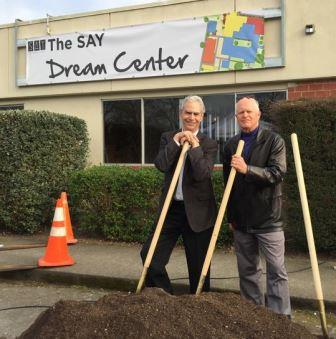We, at Partnership Resources Group, have talked with countless organizations over the last several months. There is widespread concern about how to maintain the quality of your services, meet the needs of your clients and communicate effectively with your donors, all while keeping your fundraising work moving forward.
By sharing what PRG learned, we hope these 10 Elements for Fundraising Planning will help to spark your imagination and give you ideas for a fundraising plan in the face of uncertainty.
Download our e-book version of 10 Elements of Fundraising Planning 2020-21 or read on…
1. Revised Case For Support (So Much has Changed)
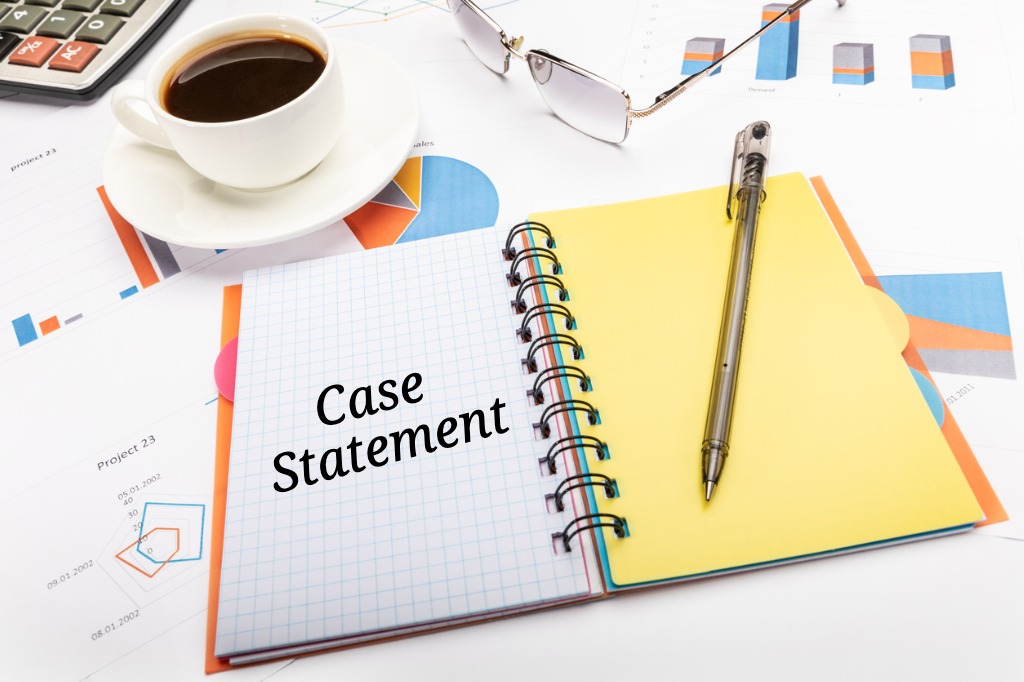
How you are staying connected to your mission and your clients is essential.
- What have you done to pivot programs and staff during the crisis and how has that impacted your budget?
- What are your current priority services, how have they changed (or not)? Always tie programs and services to human (client, patient) impact.
- If you’re not a front-line service provider how do your programs fill in the gaps in your clients’ lives (e.g., parks for exercise and mental health; children’s museum offering virtual activities to support home-bound kids; etc.)? Your mission is still relevant.
What are your plans for re-opening and what will that look like—less staff, re-activating volunteers, some staff still working remotely, new ways to provide services?
Remember that your donors invested in you because they supported your mission and believed that you would fulfill that mission. Tell them why they should re-invest in you now. What will you need in financial support as you re-position the agency in the post-pandemic time?
Keep in mind that the need for your services in these times may be clear and more-self-evident than ever, but you must revise your Case to link those services to the critical need for funding. As always, the Case should inspire and motivate the reader to take action.
2. Fundraising Forecasts with Multiple Scenarios (Best to Worst Case)

Now is a crucial time to plan for a series of fundraising scenarios – at least 3, best case to worse case. Hopefully, new or renewed donors who have given to an organization’s COVID response can be part of next year’s giving picture.
There’s a useful tool that has been created by the Nonprofit Finance Fund to help with your forecast and a video that explains how to use it. https://nff.org/blog/covid-19-and-npo-start-with-these-assessment-steps
3. Focus On Stewardship (Across All Organizational Lines)
DONOR
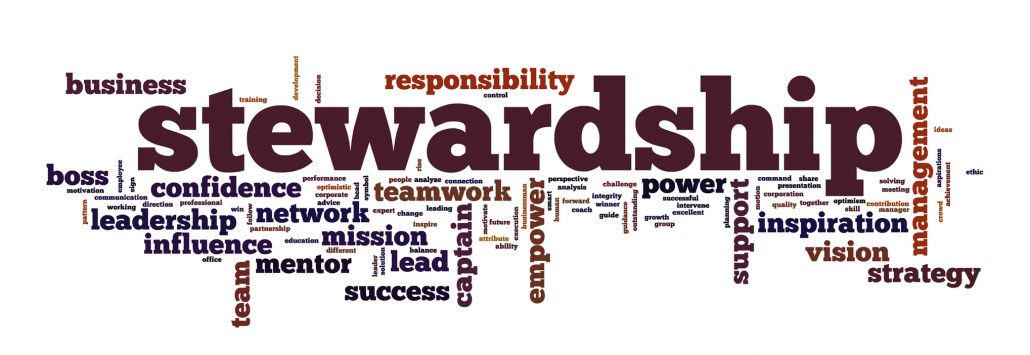 Stewardship word cloud image with hi-res rendered artwork that could be used for any graphic design.
Stewardship word cloud image with hi-res rendered artwork that could be used for any graphic design.
During the ’08 recession PRG observed many donors who could not afford to continue to support all of their charities and had to curtail their giving to some. Your objective, with all of your stewardship moves is to keep your organization on your donors’ short lists. And the way to ensure that continued engagement is through frequent, personalized communication focused on how you change lives.
- Every one of your donors deserves appropriate acknowledgment, recognition and engagement, but by segmenting your donors you can prioritize and target your stewardship efforts and use your time and organizational resources wisely.
- PRG recommends the ‘Portfolio’ approach to involving your Board in stewardship. By assigning each of your Board members a portfolio of donors now, you’ll extend your stewardship reach exponentially. And with many donors sheltering with time on their hands, this is a unique opportunity to tell your story and reinforce the importance of their continuing investment.
4. Update And Organize Your Data

A silver lining to sheltering-in-place, away from the office day to day may be newly found time to take a look at and reorganize your donor data. As we know, well-managed donor information is the backbone of any sound Development program.
Segmenting your donor information is critical, especially now. Consider the inputs necessary to properly segment, then finding the right patterns – giving longevity, increases or decreases, method of contacts, stewardship moves, a donor’s social network. Use your imagination!
5. Promoting Multiple Giving Vehicles (planned/sustaining/matching gifts)
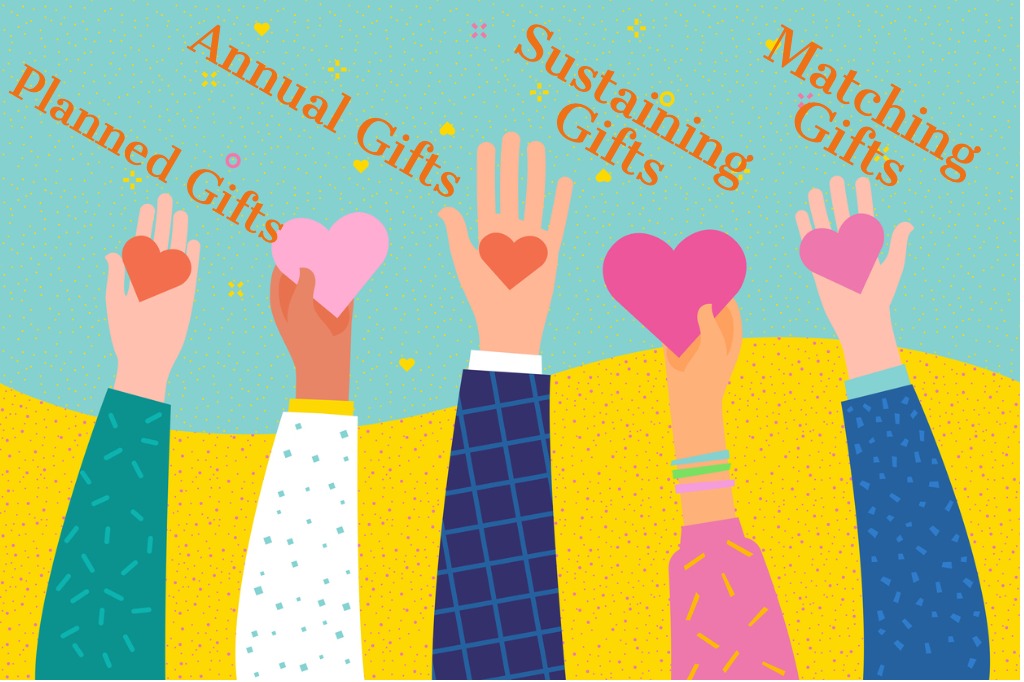
Some donors who have committed a Planned Gift may not be donors to the Annual Fund. Part of the stewardship process with these donors is to ‘cross-sell’ them on the importance and value of making an annual donation.
The best prospects for a Planned Gift may be found among your donors (at all levels) who have given regularly, year after year; who began giving many years ago; or who elected to periodically increase the amount of their gift. For these donors, the strongest argument to consider a Planned Gift may be the opportunity to maintain their charitable support after they’ve passed on—for perpetuity.
Donors may support your mission and be impressed with the work you’ve done during the pandemic. They’d like to make a significant donation but are uneasy about their finances. A sustaining gift may be the best way to meet their objectives, and to help you. For example: they wanted to contribute $200. but feel, realistically they can only afford $100 right now. But by committing to $100 now and $100 a year for the next 3 years, their net gift is $400. They are proud to have doubled what they were hoping to contribute and you can count that $100 in your annual budget projections. With the right stewardship and an improving economy, you may-well inspire them to double or triple that amount.
The many donor studies we’ve done over the years indicate that the impact of a matching gift will inspire a donor to give, or to give more, about fifty percent of the time. In other words, offering a match will motivate about 1 out of every 2 donors. Factors that often increase the impact of a match include:
- The timing of the match.
- A match to close the final portion of a capital campaign or your fiscal year will frequently generate more response.
- The identity of the donor. A match offered by a well-known and respected leader of your agency will likely spark more donations than a match by a wealthy community member.
- The size of the match can be a factor; a two-for-one match acts as a stronger incentive than a dollar-for-dollar option.
6. Events (Is there Sufficient ROI and What is the Model?)
Check out PRG’s Event a checklist for agencies considering converting in-person events to a virtual platform as well as links to experts who can assist with the conversion.
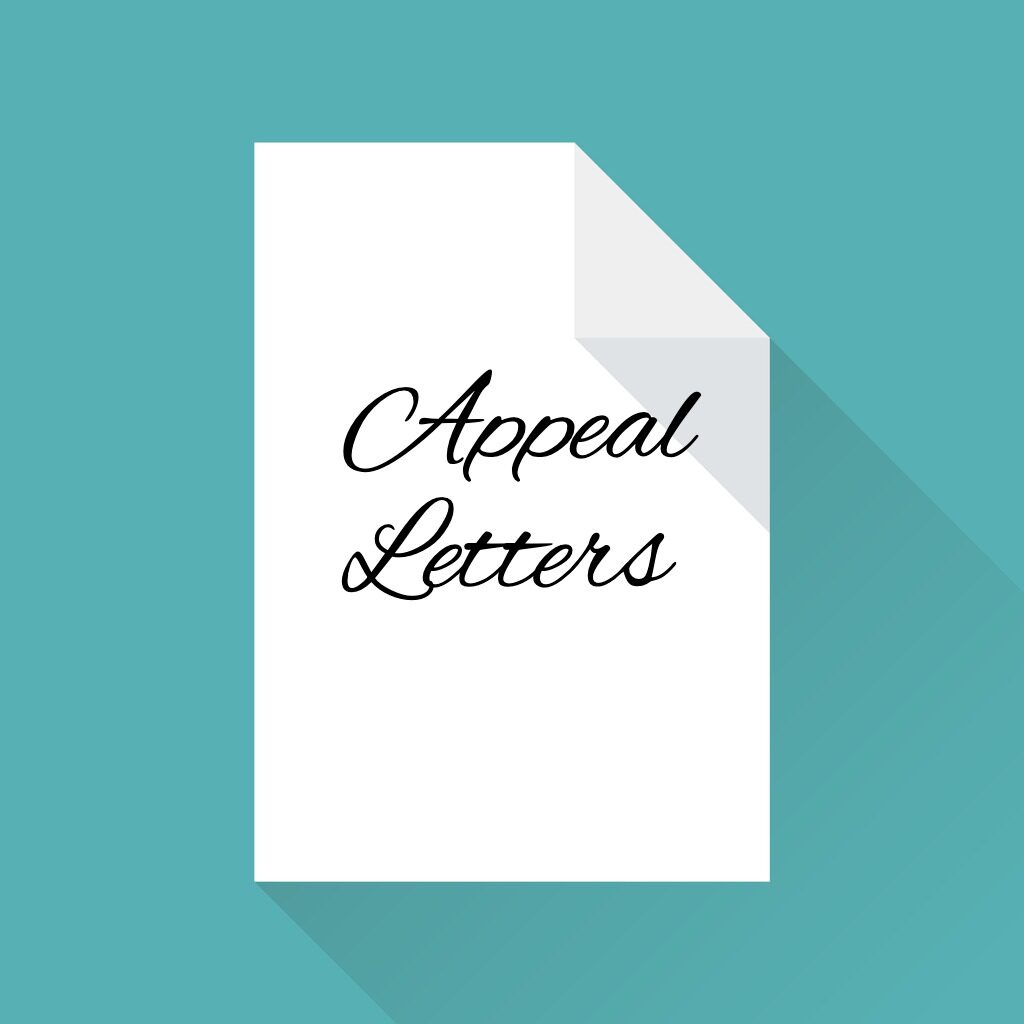
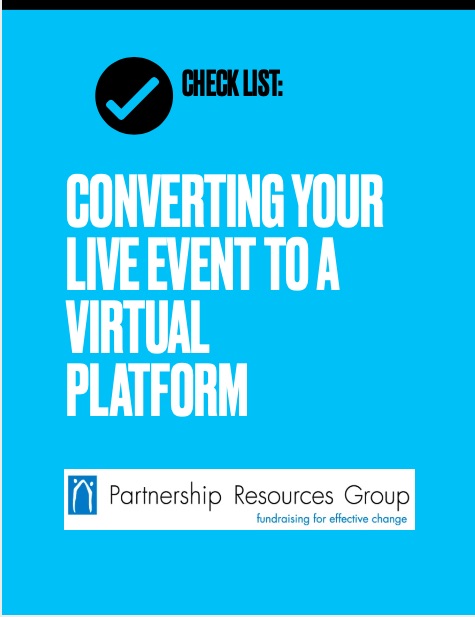
7. Appeals (Purpose and Cadence)

As we emerge from the pandemic, many agencies are struggling financially and may be reaching out to their donors more frequently than normal. This, coupled with the usual saturation of year-end appeals beginning in early November, suggests several strategies for those planning direct appeals for the balance of 2020.
Timing
Typically, most nonprofits have not considered the summer vacation months to be a good time to send out appeals. No one knows when travel may be possible again or even when domestic airline travel may be considered safe. For that reason, and the fact that many donors may still be spending more time at home, at least into the Fall, special appeals between June and October might be particularly effective this year. There is no reason to hesitate. Research during the first 10 weeks of the pandemic clearly indicates that current donors are giving—many at higher levels than normally.
Connect conversationally
Make your appeal a conversation with each donor about someone you serve, someone who is depending on you to be there for them. These days we are inundated by appeals for money, stats about the coronavirus and details about sheltering; what your donors want to hear are stories about real people that will be helped with their gift, maybe someone like them who has suddenly lost a job, health insurance and child care and is living in frightening and completely unexpected circumstances.
Segment your message to your audience
For your major investors or those donors who have been with you for years—treat them as confidants. Help them FEEL what it’s like to be serving your clients with remote staff and uncertain revenues. For those giving just below your major donor level, invite them to give to a specific fund that will elevate them into your Major Donor Club. And for those who have recently lapsed (12-36 mos.) invite them back into ‘the family’ at a time when you need everyone on-board to help those in need.
8. Digital Strategy (Even if You Don’t Have On, Yet!)
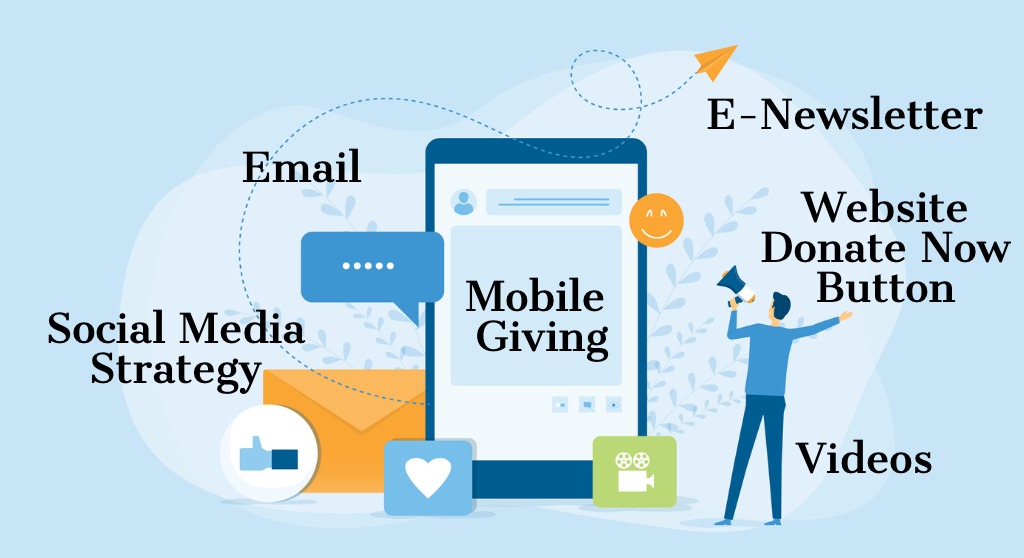
Now is the time to advance your digital prowess and presence on social media – more and more that’s where donors, regardless of generation, are spending their time. Is your donation page optimized for mobile? Are you making every effort to gather and curate email addresses of every donor and stakeholder? Is your Facebook page current and are your organization’s fans promoting you on their pages?
DNL Omni Media has put together clear 7-Steps to Creating a Nonprofit Digital Strategy – it’s a great place to start! https://www.dnlomnimedia.com/blog/nonprofit-digital-strategy-steps/
9. Build Resiliency Through Fiscal Reserves
Every disaster reminds us that the agencies that have created a Reserve Fund—usually through the proceeds of an active Planned Gifts program, have a far-greater margin of survival than those who don’t. Because of the likely depth and length of the recession created by this pandemic, the value of having a reserve will become even more dramatic.
We saw, in the ’08 recession that nonprofits who had invested their reserves solely or substantially in a traditional Endowment Fund were unable to access the principal in that Fund at a time when they needed money to maintain services and keep their doors open. Some donors, for various reasons, will still insist that their Planned Gift be invested through an Endowment. It’s wise to offer those donors the option of an Endowment Fund, but for donors who want the organization to have maximum flexibility in using their gift during times of crisis, a Board Designated Reserve Fund (BDRF) should be a second option. In fact, since 2008 many donors, especially younger folks, insist that their gift be deposited in a BDRF. Of course, a BDRF must be governed by Board policies that clearly define how, and under what circumstances, the principal may be used.
While fiscal reserves are almost-always funded with the proceeds of Planned Gifts (most often testamentary gifts), an agency could elect, by Board policy and for a limited period to deposit a small percentage of each, undesignated donation into the Reserve Fund. This approach will help to ‘prime’ the Reserve Fund until money from ‘fulfilled’ testamentary gifts begin to arrive in a predictable amount.
10. Opportunities for Synergy Beyond Your Organizational Borders
Let’s face it, the pandemic and the recession demand more working together to tackle unprecedented problems. There are countless examples of mission-aligned organizations joining forces to respond to the crisis. If you’re one of those, make that part of your story. If you’re not, look for opportunities to collaborate and start that discussion. Donors expect that their gifts will be used to maximum efficiency.
While we simply can’t know what the post-COVID era will bring, we do know that the community fabric will change and with it, a change to our nonprofit agency fabric. Those organizations that are closely linked to others in their sectors are more likely to adapt to the “new normals” and successfully compete for funds.
Download our e-book version of 10 Elements of Fundraising Planning 2020-21

